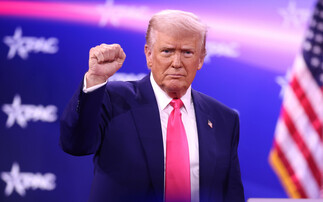
From Tuvalu to Taiwan, 2024 has been a big year for democracy, with half the world's population across 80 countries heading to the polls. While everyone cares about their own elections, it's rare for one overseas to feature as front-page news. In this, the US (as it often is) is an exception.
No matter what your political view is, the result of the US election will have significant implications—not only for US citizens, but for global politics, businesses, and investors. Despite its significance, our focus in the lead-up to polling day was not on attempting to call the outcome. Even if we had thought we could pick the political winner, picking the winners in the stock market as an outcome of that result is even harder.
Indeed, past political expectations have often failed to align with actual stock market performance. For example, in 2016, markets could have been forgiven for thinking that energy companies would thrive under "drill baby drill" Trump, but economics and a pandemic had other plans—energy shares lagged world stock markets by a cumulative 50% during his term. For some companies, policy decisions of the incoming Trump administration will be important drivers of intrinsic value. For most, however, other factors will matter much more.
That is why we believe our time is better spent focusing on the fundamentals, and our approach to the US market—representing roughly 70% of world stock markets by market value—is no different.
As stock market runs go, the recent performance of the US has been nothing short of remarkable. Over the last decade, US stocks have delivered 14% per annum in absolute terms, 12% p.a. versus US Treasury bonds, and 10% p.a. versus inflation. Over the very long term, typical returns are about 5 percentage points lower per annum.
This run has been so good, and has sustained for so long, that it feels to some like it will never end. But valuations for many US stocks are starting to look stretched, and not just for the tech giants that now dominate the market. For us as stock pickers, it has become harder to find attractively valued stocks in the US.
Harder, but not impossible. It is after all a big place. Some 55% of our Global Equity Strategy is invested in US shares—much less than the World Index—but still a major exposure. However, it is also a very different exposure. Most of that US weight is in just eight top holdings, and almost all of it is in just sixteen substantial positions.
By and large, our underweight to the US is as a result of the compelling value on offer outside the US. That reflects the opportunity set, which differs for passive and active investors.
To gauge that, we can look at valuations. Given the strength of the leading US businesses, looking at a straight price-to-earnings ratio is unsatisfying. Better companies should trade at higher valuations. Instead, we can look at something that gives credit to growth. Our Quant team runs a model which takes a company's long-term growth, profitability, and valuation, then asks—if the future is like the past, what sort of return should we expect from today? That's a big "if", and we often invest in companies where the future looks better than the past, but it's a useful yardstick.
We can then apply that model to US and rest-of-world stock markets, looking for shares with unambiguously attractive scores—those with expected returns of 15% per annum or higher over a long-term horizon.
Such shares represent a small portion of the US market—just 5% for a passive investor in the Russell 1000. That is exceptionally low historically, and nearly as bad as the dot-com bubble. Fortunately, as active investors, we don't have to own every stock in any market, let alone at index weights. From a stock picker's perspective, our Quant model suggests there are 120 attractively-valued companies in the Russell 1000. That too is below average, but less extreme. A bottom-up lens has its advantages.
So does a global perspective. A passive investor in the MSCI ACWI ex-US index would find 30% of their portfolio invested in stocks with high expected returns. That is about normal historically. Yet things still look better to an active investor. Fully 700 stocks outside the US appear to offer high expected returns. To us, that looks like an attractive hunting ground for a few dozen great ideas.
In both politics and markets, it is worth paying attention to the US. As our holdings attest, there are opportunities to be found there. But the rest of the world is worth a look, too. It's easier to find value where others aren't looking.
Past performance is not a reliable indicator of future results. The value of investments in the Orbis Funds may fall as well as rise and you may get back less than you originally invested. It is therefore important that you understand the risks involved before investing. This report represents Orbis' view at a point in time and provides reasoning or rationale on why we bought or sold a particular security for the Orbis Funds. We may take the opposite view/position from that stated in this report. This is because our view may change as facts or circumstances change. This report constitutes general advice only and not personal financial product, tax, legal, or investment advice, and does not take into account the specific investment objectives, financial situation or individual needs of any particular person. This report does not prohibit the Orbis Funds from dealing in the securities before or after the report is published.









